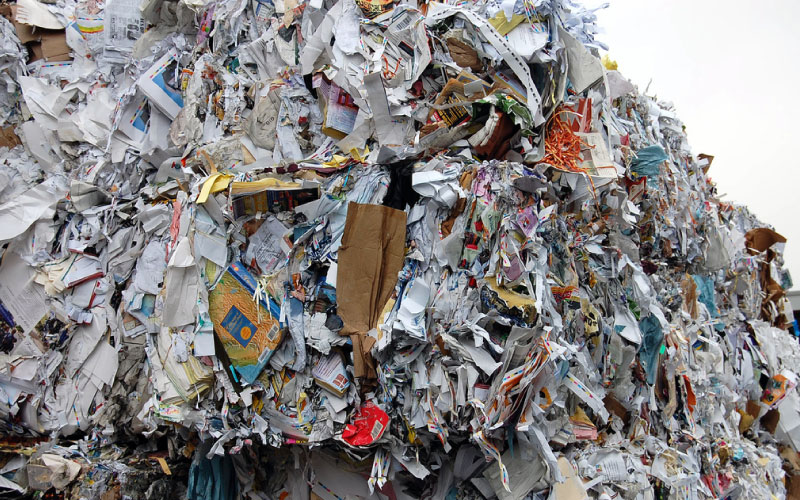The International University of East Africa is setting its mark in the innovation and engineering world. The young institution of higher learning is leading its counterparts in innovating technologies that are revolutionising the agriculture, health, environment sectors, etc and changing lives of individuals. The technological university of choice is set to unveil a paper recycling technology.
When implemented, paper recycling technology is projected to save 19 trees per a metric ton (1000kgs) of paper used which in turn absorb 127 kilograms of carbon dioxide in the atmosphere annually.
What’s paper recycling?
Paper recycling is simply a process of making already used paper re-usable. Surprisingly, paper is one of the most easily recycled materials, however, paper eventually reaches a point where it can no longer be recycled due to the progressive shortening of fibres each time it is recycled.
Therefore, recovered paper processing is based on the type of the recycled paper product which in turn determines the type of recovered paper that is used as the raw material. The better quality also known as pulp substrate grade is used to make printing and writing paper. The lower qualities are mainly used to produce packaging papers and paper boards.
Background of paper industry in Uganda
According to Uganda Bureau of Statistics, Uganda’s paper market is projected be worth 0.5 trillion shillings by the fall of this year, 2020. The Per capita consumption figures basing on the 7kgs per person per year in Uganda are expected to increase sharply over the next 10 years due to the increase in need of paper daily.
Uganda’s paper market is relatively large and is worth billions of shillings. The brisk increase in the population and economy development has forced the paper market to grow because there has been an increase in demand of paper and paper products.
Why is paper recycling important?
The primary raw material of paper manufacturing is wood from trees. Therefore, with rising population, demand for paper and paper products is increasing, consequently resulting to increased cutting of trees to provide wood for the paper industry.
2019 ended the hottest decade in history! In fact, last year was the second hottest year after 2016 in history. 2019 also saw increased climate change awareness campaigns most memorably inspired by the Swedish activist Guetter Thunberg.
Henceforward, paper recycling is imperative in reducing the usage of trees which play a significant role in curbing climate change through carbon dioxide absorptions in the atmosphere. Trees are the major raw materials of paper manufacturing.
Despite significant advancement in technology, paper still plays an important role in organizations, industries, individuals, hospitals, schools, etc. Paper influences Our day to day life in different domains.
Therefore, each metric ton (1,000 kilograms) of recycled paper can save approximately: 19 trees that can absorb about 127 kilograms of carbon dioxide from the atmosphere each year, 1,500 litres of oil, 2.68 cubic meters of landfill space, 4,400 kilowatts of energy and 29,000 litres of water.
So, what are the benefits of recycled paper?
Virgin paper will always be superior to recycled paper for many applications, but recycled paper has some incredible advantages too:
- Sustainability: Forests are getting depleted and the desire for environmental well-being has led to the Sustainable Forestry Initiative (SFI), which combines the continuous growing and harvesting of trees with the long-term protection of wildlife, plants, soil, and water quality.
- Environmental Impact: The primary component of the paper is wood pulp, which is obtained from trees. Recycling paper results in reduced usage of wood as the raw material, which means less forest depletion and a host of environmental benefits.
- Reduction of Emissions: Less energy is spent on recycling paper which ensures that fewer greenhouse gases are released into the atmosphere. Since decomposition causes methane emissions, recycling paper cuts these down too.
- Fibre Supply: Recycled paper ensures that the available supply of fresh fibre is extended. This leads to carbon sequestration, which means more carbon in the soil.
- Landfill Space: As more paper is recycled, less land is filled with wastepaper. This saves the scarcest resource of all, i.e. land.
- Water Consumption: Virgin paper production consumes a lot more water than recycling paper, so a substantial amount of water is saved through wastepaper recycling.
- Waste Disposal: Paper forms a huge component of everyday waste and tends to solidify increasing weight. Recycling paper means less waste to deal with.
Is all paper recyclable?
Not all types of paper can be recycled, but most can. These include:
Old Corrugated Containers/Cardboard, Double Line Kraft, Old Newsprint, White Ledger, Coloured Ledger, Magazines, Sorted Office Waste, Mixed Paper, magazines.












